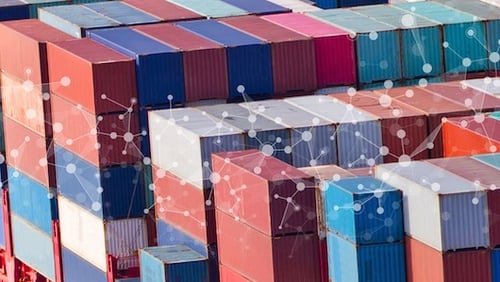
By Mohammad Zraiqat
While high-profile cases of payments fraud continue to occupy international headlines, the increasing menace of trade-based money laundering (TBML) is an often under-reported financial and reputational risk to banks and a growing concern to governments and regulators.
Transnational crime is worth up to $2.2tn each year and much of it is facilitated by trade mis-invoicing and other forms of trade-based money laundering.
The United States Department of Homeland Security defines TBML as “disguising criminal proceeds through trade to legitimize their illicit origins”; the proceeds being profits generated by organised crime groups, drug traffickers, human smugglers, the proceeds of corruption, or funds intended to buy equipment for terrorist-related activity.
Given banks are often the (unwitting) facilitators of this illegal activity, it is not surprising they are coming under increasing pressure from regulators to take greater action to limit this growing international crime.
TBML is a global issue that undermines local and national economies. As domestic and international trade increases in a given region, especially one which shows enduring signs of bribery and corruption issues, so the region becomes more susceptible to TBML.
Regulators have put a spotlight on trade finance and are putting increased pressure on banks in all regions to play a more proactive role in combating TBML
Southeast Asia is a good example. Here, TBML has been on the rise in recent years, driven by a confluence of factors including robust economic growth, corruption issues, the presence of sophisticated transnational criminal networks and an uneven regulatory environment. Not every territory is as stringent regarding TBML as Hong Kong and Singapore, and these factors, as well as political, socio-economic and cultural dynamics, put the region at heightened risk.
In response, regulators have put a spotlight on trade finance and are putting increased pressure on banks in all regions to play a more proactive role in combating TBML. Banks are required to put in place tighter compliance checks on payment systems and monitor trade processes, in line with the stringent guidelines and red flag checks put in force by bodies such as the Monetary Authority of Singapore (MAS), Hong Kong Monetary Authority (HKMA) and the UK’s Financial Conduct Authority (FCA).
In essence, the onus of detecting and reporting suspected criminal behaviour now lies with the bank. Failure to establish appropriate checks and controls puts banks at increased monetary (through fines) and reputational risk. Most banks need a whole new approach to TBML as a result.
TBML can be hard to spot
TBML is big business because TBML can be hard to spot. It is difficult to detect because of the complexity within the trade finance process itself, the number of entities involved, and a reliance on manual processes. The unstructured, inconsistent format of trade finance documentation, including word documents, PDF files and scanned images create automation and screening challenges.
Trade instruments such as Bills of Exchange, Bills of Lading, Letters of Credit and SWIFT MT7xx series are heavy on free-format text and unstructured data, and do not lend themselves well to most compliance filters, which require formatted, structured data in order to accurately and correctly detect non-compliant items. In other words, it’s easy for a mispresented price or quantity of goods, or a false customs declaration to go unnoticed.
To keep track of trade finance transactions is a systems headache. There is a need to maintain multiple applications, legacy systems and vendor relationships for the different aspects of TBML compliance, such as sanctions, vessel tracking and document matching; there is also a need for the ability to link these systems competently to a range of compliance filters, each requiring their own unique work-flows.
For most banks, this level of complexity serves to render the required robust and consistent TBML screening, robust reporting and detailed audit trail logging a highly inefficient and costly manual process.
The role of artificial intelligence
AI technology has a powerful role to play in combatting the complexities of TBML and addressing the core challenge of a fragmented and unstructured document trail along the trade chain. How can disparate documents and unstructured data be understood, analyzed and thoroughly assessed efficiently?
For the non-digital document component, the combination of optical character recognition (OCR) technology, tightly integrated with a system built using a range of AI disciplines, including natural language processing (NLP) and machine learning, offers the foundation of the solution to enable banks to undertake accurate, efficient compliance screening and reporting for trade finance activity.
The OCR component scans unstructured data from trade documents and instruments and puts the information into a text format, which can then be processed and analysed by the NLP system.
By harnessing the unique capabilities of AI technology, banks can meet their TBML compliance obligations in a safe and efficient fashion
Using NLP in combination with a rules-based engine and machine learning, the system can then interpret unstructured text and derive meaning from it to identify suspicious activity, red flag indicators and sanctions subjects. It also allows for very effective monitoring of money laundering activities, including shipment to high-risk countries and dual-use goods.
By harnessing the unique capabilities of AI technology, banks can meet their TBML compliance obligations in a safe and efficient fashion, without the burden of having to employ large numbers of expensive, error-prone human resources to tackle these difficult compliance checks manually.
Powered by computer algorithms, the detection of red flag indicators across multiple systems, including shipment to high-risk countries, dual-use goods, over/under invoicing, ghost shipping, pricing anomalies and document comparisons, becomes automated, streamlined and easy to report.
Transnational crime and TBML will continue to grow until the paradigm of high profits and low risks is challenged. However, with the practical application of AI in payments and financial crime compliance, and with end-to-end trade transaction cycle monitoring, banks are well placed to redress this balance and secure global trade for good.
Mohammad Zraiqat is product manager – financial crime compliance solutions at Pelican.



